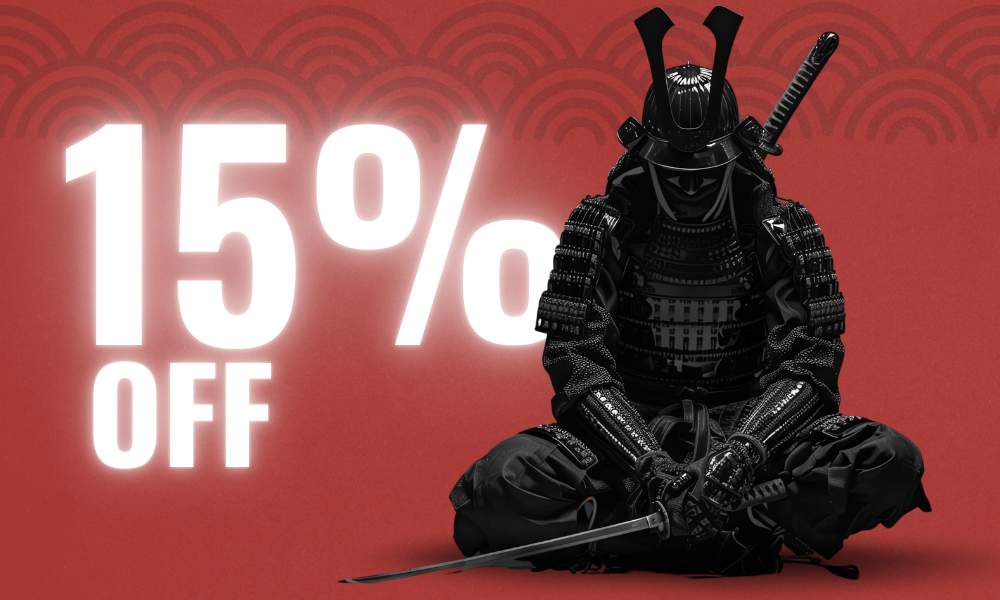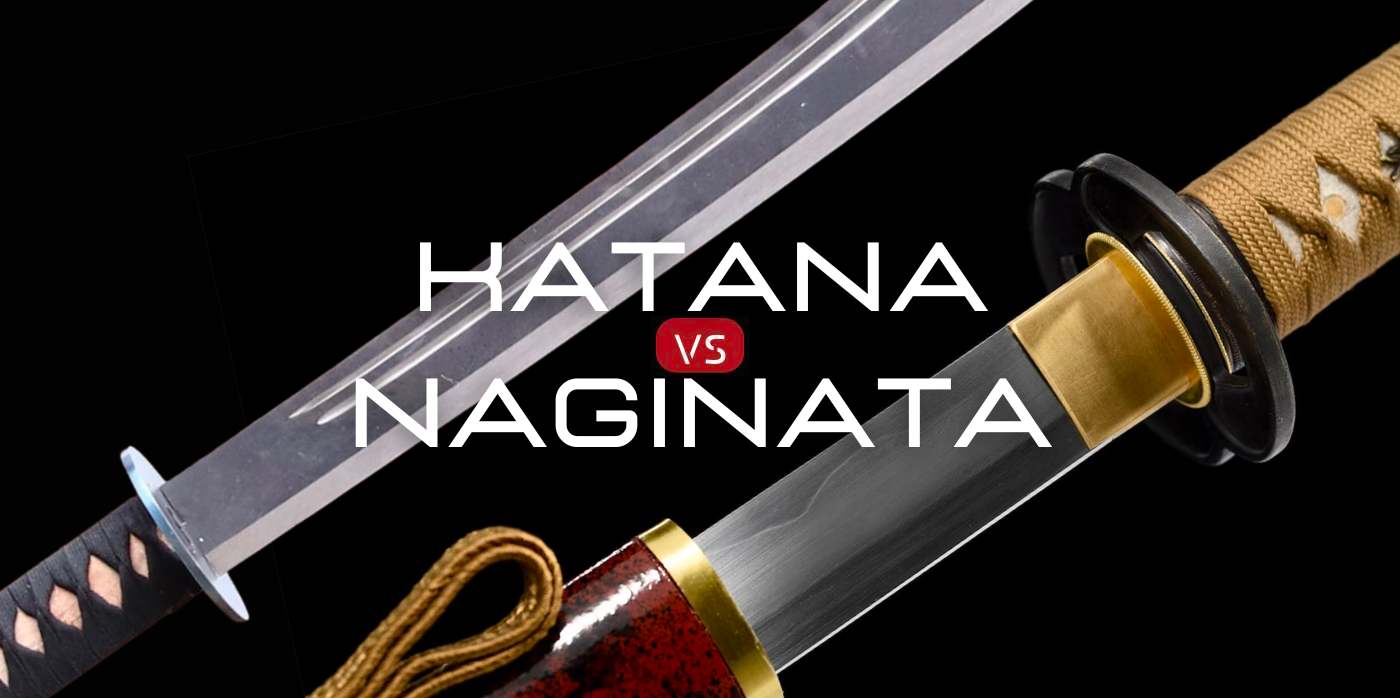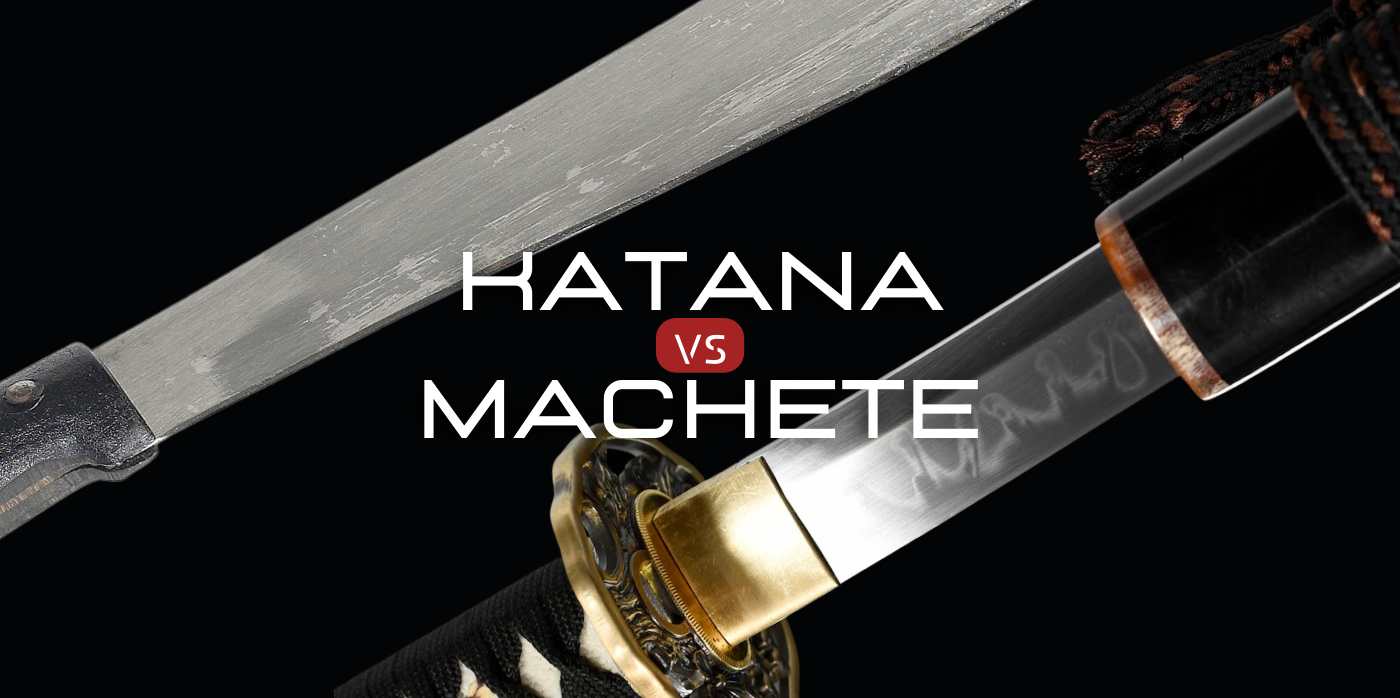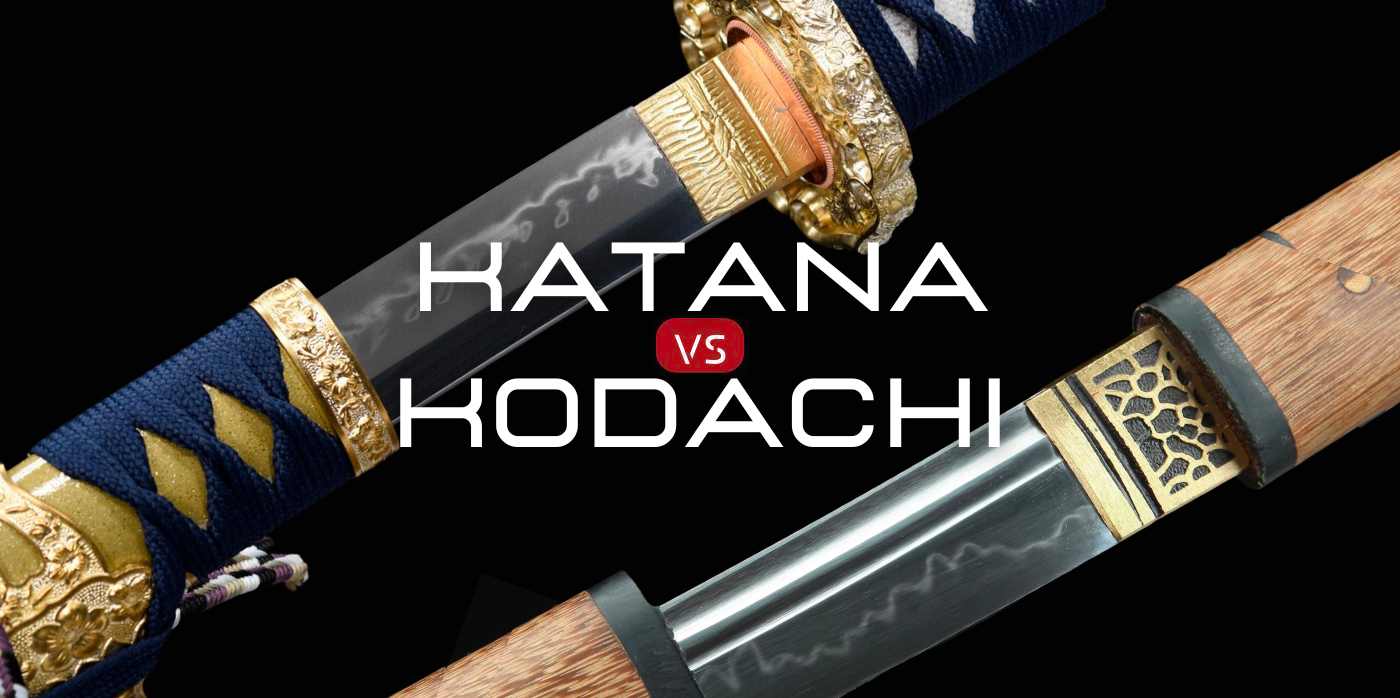What is a naginata
A naginata (長刀) is a traditional Japanese pole weapon that consists of a long wooden shaft with a curved blade attached to the end. It resembles a combination of a sword and a spear. Historically, the naginata was used by samurai and warrior monks (sōhei) and even female warriors in feudal Japan. It was effective in both slashing and thrusting, allowing the wielder to engage opponents at a distance while maintaining versatility in combat.
The weapon also has cultural and ceremonial significance and is used in modern martial arts practice, particularly in the discipline of naginatajutsu, which focuses on the techniques and forms associated with the naginata.

Naginata
| Type | Polearm |
| Origins | Heian period (794-1185) |
| Usage | Effective against cavalry and infantry; used in defense of fortresses and temples |
| Shaft | Curved, single-edged blade made from high-quality steel |
| Pole | Constructed from oak or other hardwoods |
| Weight | 2 to 3 kilograms (approximately 4.4 to 6.6 pounds) |
| Length | 6 to 8 feet |
| Combat Style | Sweeping cuts, thrusting attacks, blocks, parries, and distance control |
Is Naginata a Glaive?

Naginata VS Glaive
The naginata is often compared to a glaive, which is a type of pole weapon used in various cultures, particularly in Europe. Both the naginata and the glaive feature a long shaft with a single-edged blade attached to the end, allowing for similar combat techniques, including slashing and thrusting. However, there are some distinctions between them.
The naginata is a traditional Japanese weapon, deeply rooted in the martial traditions and history of Japan. Its blades are typically more curved, resembling the shape of a katana, and are mounted on a wooden shaft. In contrast, the glaive is a European weapon, with variations found in different regions throughout the Middle Ages and Renaissance. Glaive blades can be straight or slightly curved and are often broader, with some designs including hooks or other features for catching and controlling an opponent's weapon.
The usage of these weapons also differs. The naginata was used by samurai, warrior monks, and female warriors (onna-bugeisha) in Japan. It was effective in both battlefield and individual combat. On the other hand, the glaive was used by European infantry, particularly during the Middle Ages, and was primarily a foot soldier's weapon, effective against both infantry and cavalry.
Design of the Naginata
Blade (Ha)
A naginata is a traditional Japanese pole weapon characterized by its long wooden shaft and a curved blade mounted at the end. The blade resembles that of a katana, featuring a single edge designed for both slashing and thrusting. Typically, the blade length ranges from 30 to 60 cm (approximately 12 to 24 inches)
Shaft (Ebu)
The shaft varies from 120 to 240 cm (about 4 to 8 feet), often made of sturdy wood like oak. The shaft is oval in cross-section, providing a better grip and enhanced control during use.
Guard
The weapon sometimes includes a tsuba, or guard, situated between the blade and the shaft, which prevents the hand from sliding onto the blade and offers additional protection. Various metal fittings, known as koshirae, secure the blade to the shaft. These fittings are not only functional but often feature intricate designs, showcasing the craftsmanship involved in creating a naginata. The bottom end of the shaft typically has a ferrule called an ishizuki, which can also be used for striking.
Koshirae
Naginatas may be adorned with lacquer and other decorative elements, enhancing their aesthetic appeal. The handle is often wrapped in leather or cord for improved grip.
How long is a naginata?
A naginata typically has a length ranging from 120 to 240 cm (about 4 to 8 feet). The exact length can vary depending on the specific design and historical period. The blade itself usually measures between 30 to 60 cm (approximately 12 to 24 inches). This combined length allows the naginata to be effectively used for both slashing and thrusting in combat, providing the wielder with significant reach and versatility.
Is naginata a heavy weapon?
The naginata is not considered a particularly heavy weapon. Its weight is balanced to allow for fluid and precise movements. Typically, a naginata weighs around 2 to 3 kilograms (approximately 4.4 to 6.6 pounds). This relatively moderate weight, combined with its long shaft, allows for both powerful strikes and quick, agile maneuvers. The weapon's design prioritizes balance and ease of handling, making it suitable for a wide range of martial techniques.
The Art of Naginatajutsu

Naginatajutsu | Picture by Guillaume Erard
Naginatajutsu (長刀術 or 薙刀術) is the traditional Japanese martial art dedicated to the use of the naginata, a pole weapon with a curved blade. This ancient practice encompasses a variety of techniques designed for combat and self-defense, and it has been preserved through centuries of disciplined training and cultural reverence. Naginatajutsu not only highlights the technical prowess required to wield the naginata but also embodies the philosophical depth and martial spirit of the samurai.
The Emergence of Naginatajutsu
The roots of Naginatajutsu can be traced back to the Heian period (794-1185), where the naginata was first employed as a formidable weapon against cavalry. As warfare evolved, so did the techniques and training methodologies associated with the naginata. By the Kamakura period (1185-1333), Naginatajutsu had become an essential component of the samurai's martial repertoire.
Techniques in Naginatajutsu
Fundamental Techniques
- Shomen Uchi: A powerful overhead strike aimed at the opponent's head.
- Sokumen Uchi: Diagonal slashes targeting the sides of the opponent.
- Tsuki: Thrusting attacks designed to pierce through armor or vital points.
Defensive Maneuvers
- Nagashi Uke: A deflective block that redirects the opponent's strike.
- Hiki Uke: A pulling block used to create distance and prepare for a counterattack.
- Suriage: A rising block that transitions into a counterstrike.
Kata and Sparring
Kata (pre-arranged forms) are integral to Naginatajutsu training, allowing practitioners to internalize techniques and principles through repetition. Sparring, or randori, provides a dynamic environment to apply these techniques in real-time, honing reflexes and decision-making skills.
Katana Vs Naginata in Combat
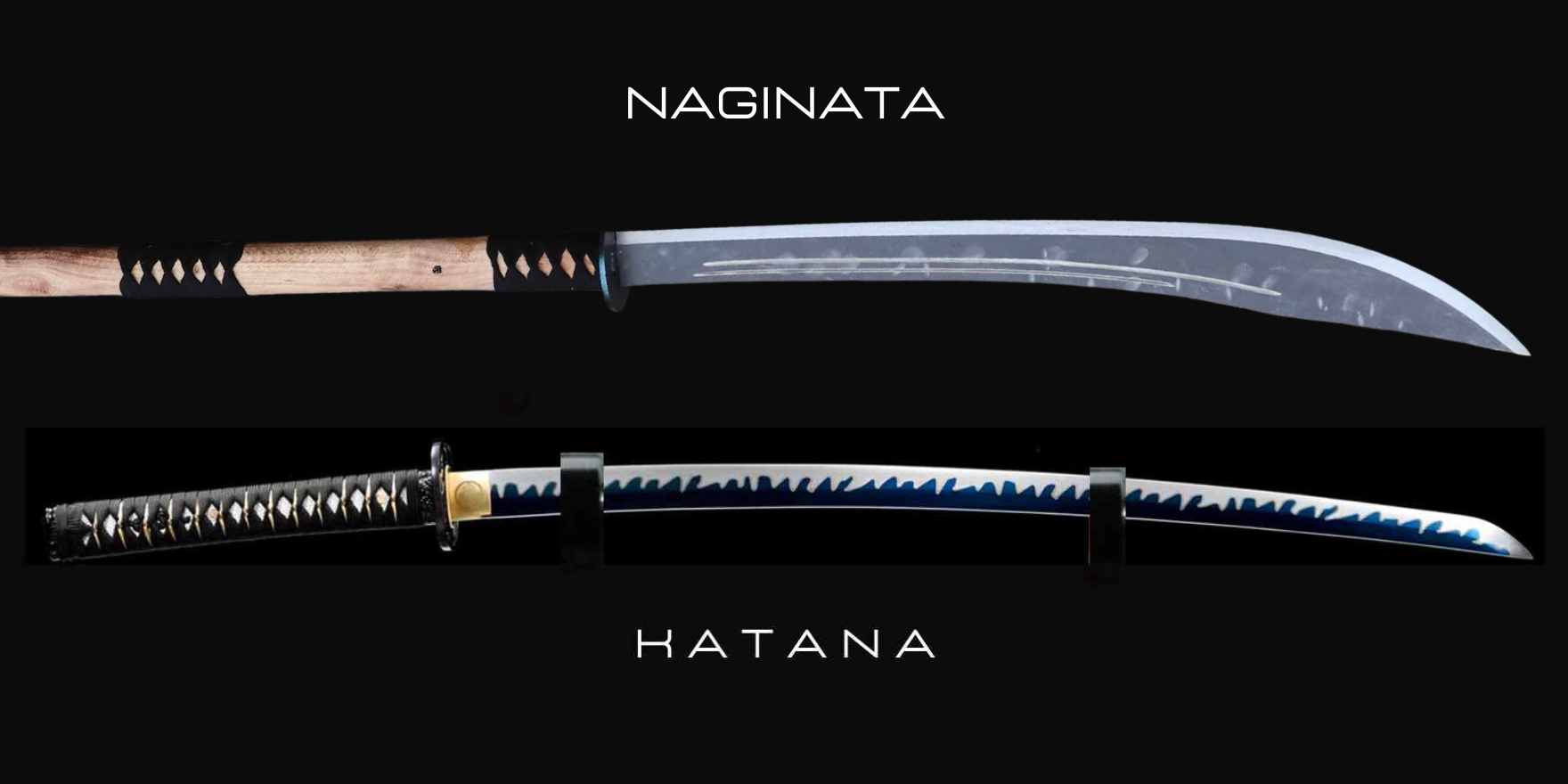
Wooden Kanabō
Is naginata better than katana
Determining if the Naginata holds an edge over the Katana—or vice versa—is a nuanced inquiry, as each weapon comes with its distinct set of strengths and weaknesses tailored for particular combat scenarios. Here's a brief rundown for comparison:
Reach
- Katana: Being a close-range weapon, the Katana requires the user to get within arm's length of the opponent.
- Naginata: Thanks to its long pole, the Naginata offers a greater reach than the Katana, making it an ideal weapon for keeping adversaries at arm's length. This attribute of extended range becomes particularly beneficial in scenarios involving cavalry charges or multiple attackers.
Versatility
- Katana: The Katana is versatile in its use, suitable for quick cuts, parries, and thrusts. Its design allows for adaptability in various forms of combat.
- Naginata: While not as versatile, it excels in situations that require reach, like defending against cavalry or multiple attackers.
Effectiveness
- Katana: The cutting efficiency of the Katana is unparalleled, capable of severing limbs and even cutting through armor with a well-placed strike.
- Naginata: Its length makes it incredibly effective for crowd control and for disabling opponents before they get too close.
Skill Level
- Katana: Mastery requires a deep understanding of various martial arts techniques and years of disciplined training.
- Naginata: While easier to start with, mastery of the Naginata is no less challenging, requiring a different skill set focused on reach and angular attacks.
Weight and Balance
The Naginata, being a longer weapon, is generally heavier and may require both hands to wield effectively. A Katana is lighter and can be used one-handed, allowing for a different set of techniques and the use of a secondary weapon or shield.


